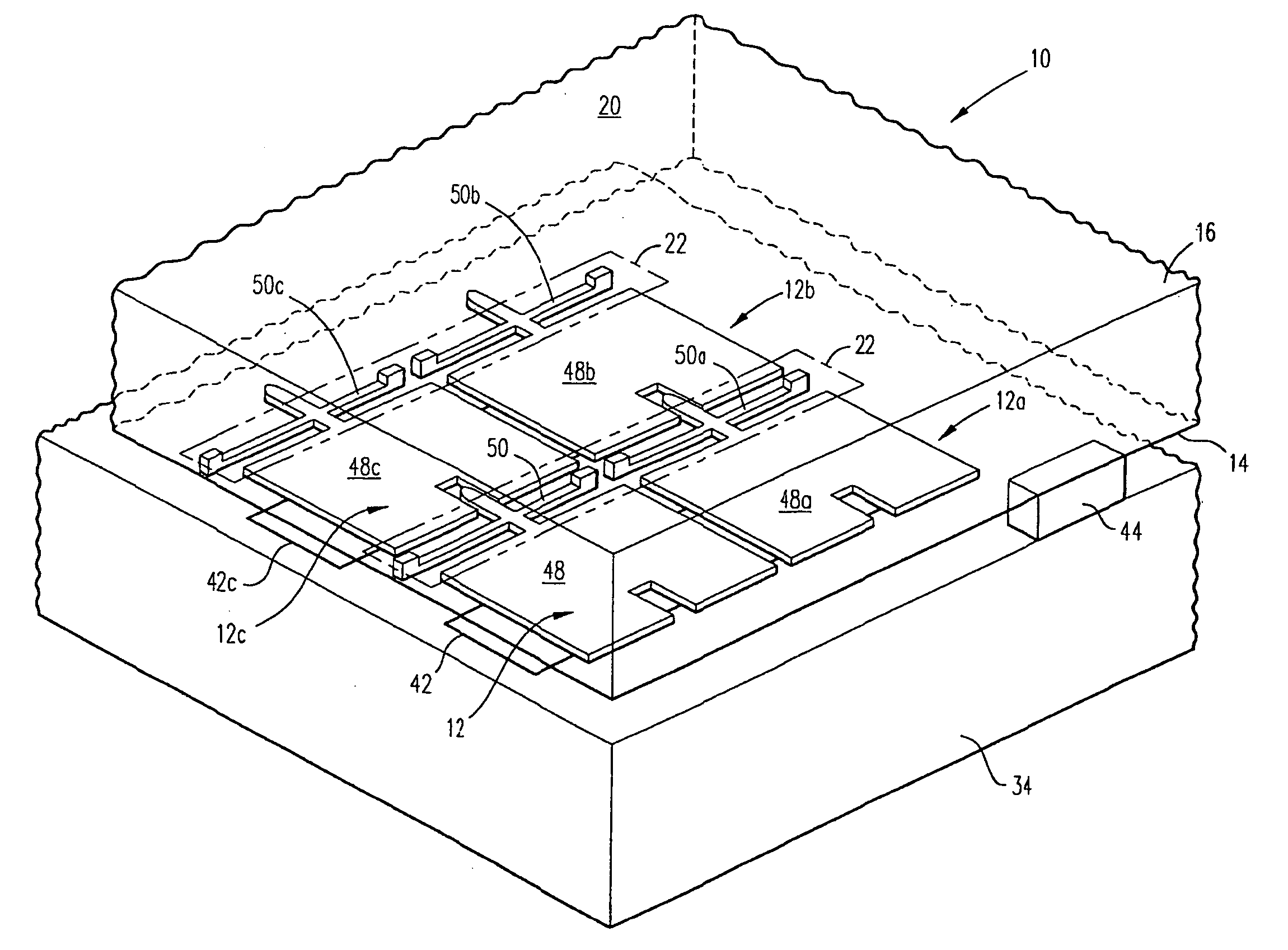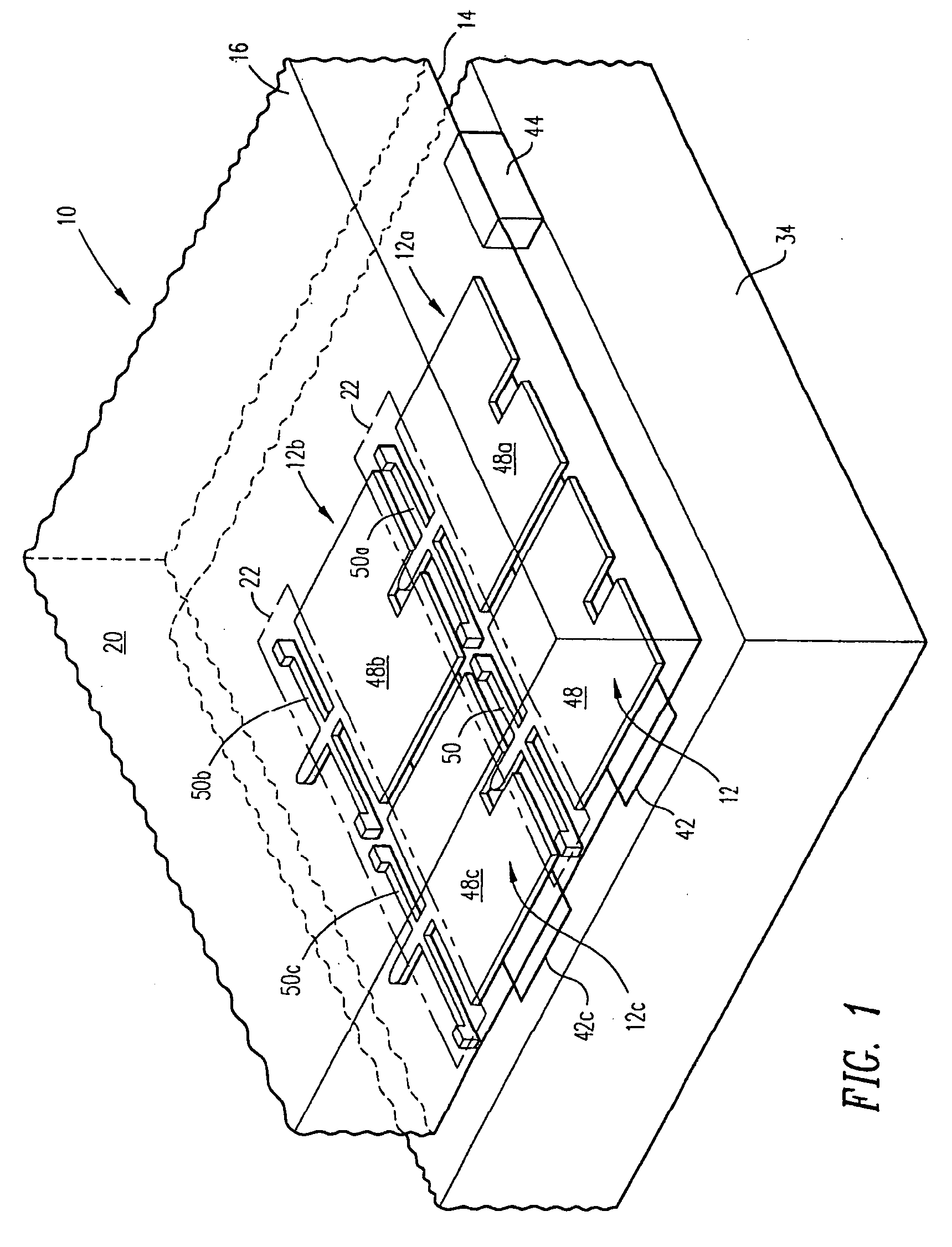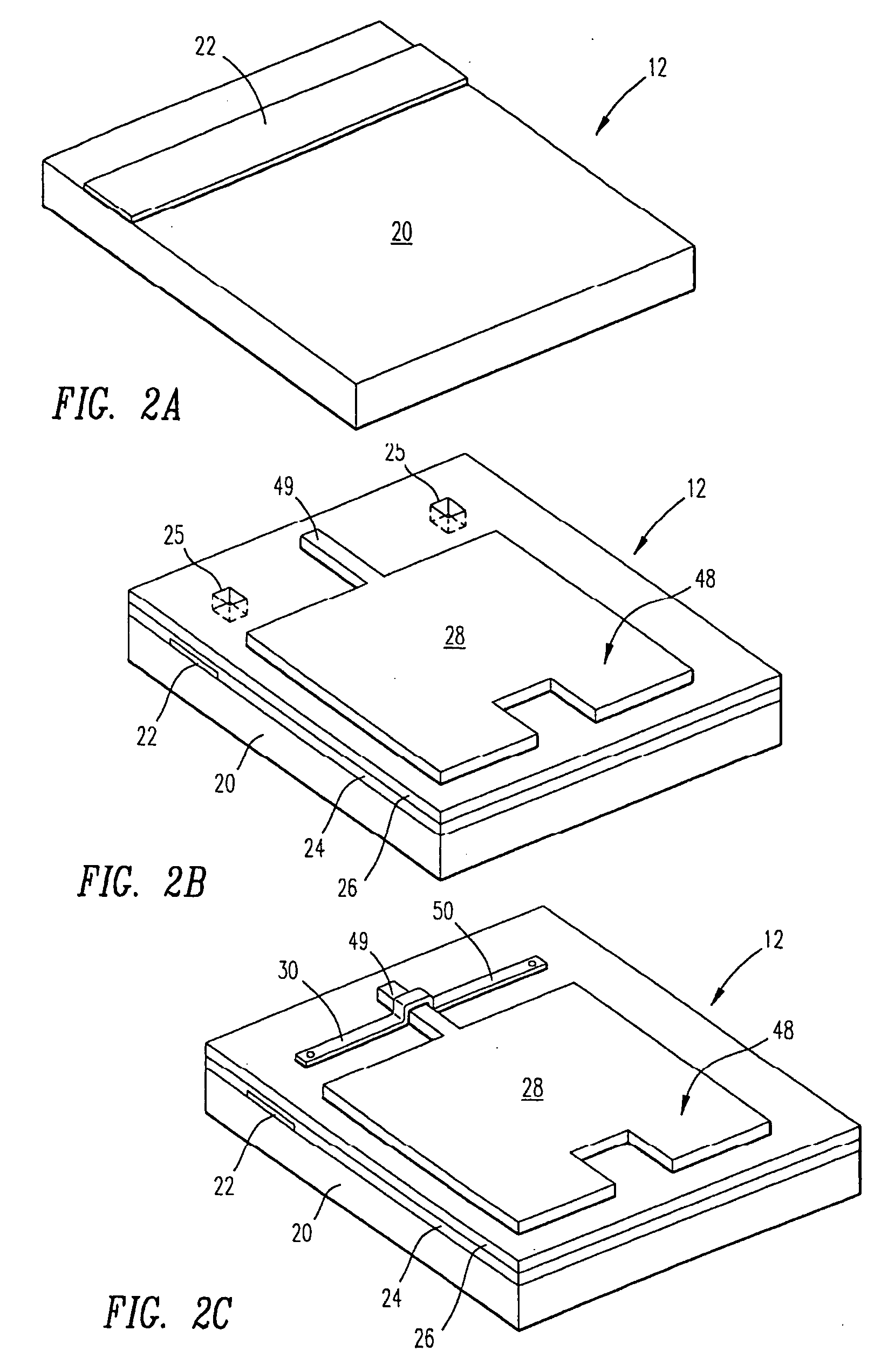Double substrate reflective spatial light modulator with self-limiting micro-mechanical elements
a micro-mechanical element and spatial light modulator technology, applied in the field of spatial light modulators, can solve the problems of reducing optical efficiency, reducing the response time of the most widely used liquid crystal, and limited device contrast ratio, and achieves the effects of high device robustness, simple fabrication, and low cost and simple construction
- Summary
- Abstract
- Description
- Claims
- Application Information
AI Technical Summary
Benefits of technology
Problems solved by technology
Method used
Image
Examples
Embodiment Construction
[0083] This description refers to several figures which contain reference numerals. The same reference numerals in different figures indicate similar or identical items.
[0084] Throughout this description, the words “optical” and “light” are used. In the description and claims, “optical” means related to any electromagnetic frequencies, not just frequencies in the visible range. For example, an “optically transmissive substrate” is a substrate which is transmissive to electromagnetic propagation of a working frequency, whether in the visible range or not.
[0085] A top perspective view of a corner of an embodiment of a micro-mechanical spatial light modulator 10 (hereinafter, “SLM 10”) of this invention is shown in FIG. 1. An exploded view of the SLM 10 of FIG. 1 is shown in FIG. 13. SLM 10 may include pixel cells of any configuration or array size. However, for clarity, only four pixel cells 12, 12a, 12b and 12c in a two by two grid configuration are shown in FIG. 1. The pixel cells...
PUM
 Login to View More
Login to View More Abstract
Description
Claims
Application Information
 Login to View More
Login to View More - R&D
- Intellectual Property
- Life Sciences
- Materials
- Tech Scout
- Unparalleled Data Quality
- Higher Quality Content
- 60% Fewer Hallucinations
Browse by: Latest US Patents, China's latest patents, Technical Efficacy Thesaurus, Application Domain, Technology Topic, Popular Technical Reports.
© 2025 PatSnap. All rights reserved.Legal|Privacy policy|Modern Slavery Act Transparency Statement|Sitemap|About US| Contact US: help@patsnap.com



